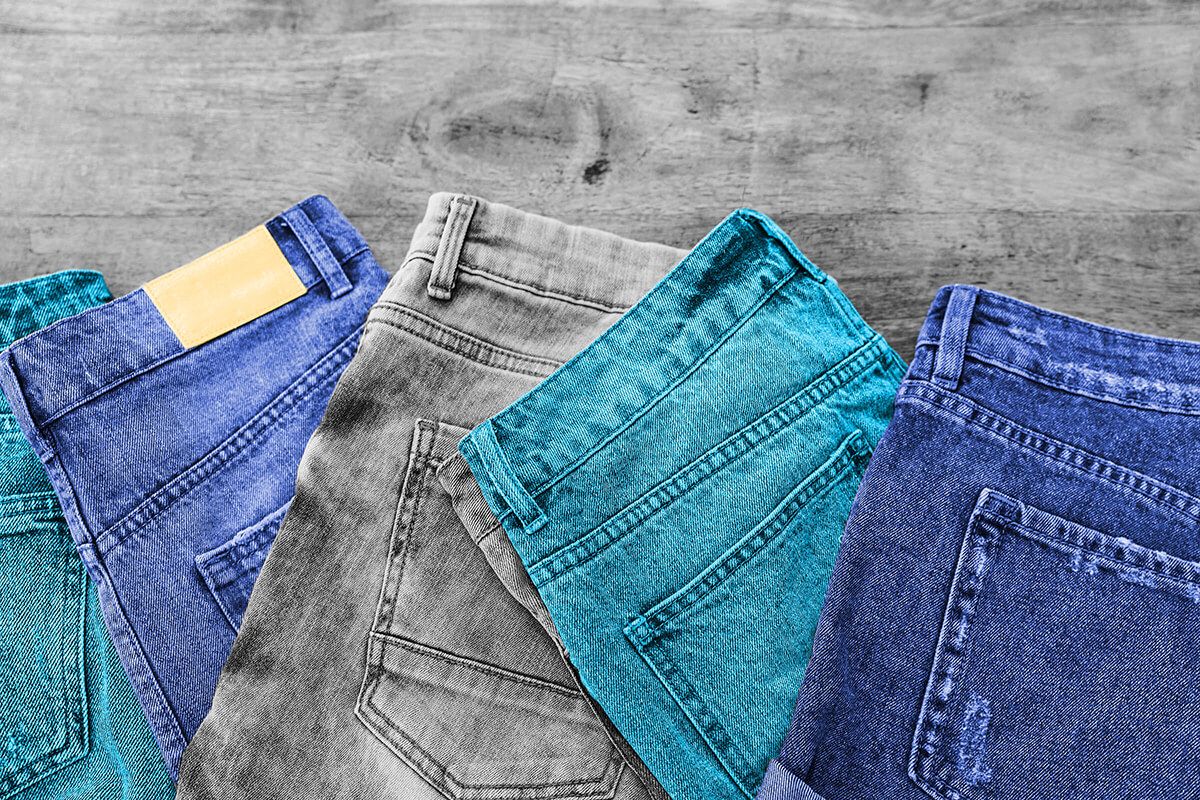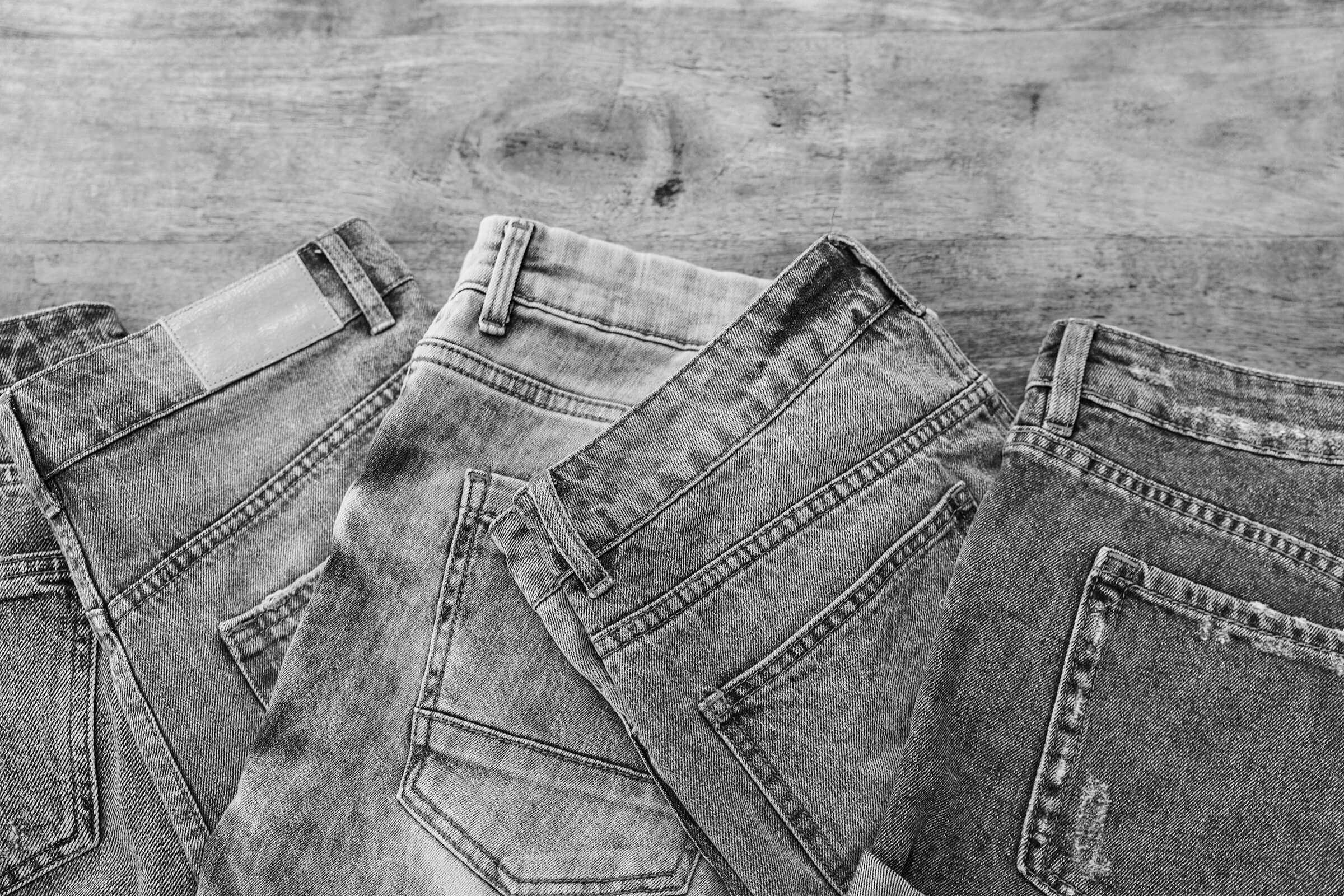

While many types of apparel go in or out of fashion, blue jeans retain a timeless appeal. Denim pants are not only versatile, fashionable, and comfortable, but they also have a rich history dating back to the 1800s, evolving from a workwear staple into one of the world’s most popular clothing items. From the U.S. President who once banned them in the Oval Office to the legendary crooner who inspired the Canadian tuxedo, zip up these six fascinating facts about blue jeans.
Blue Jeans Were Initially Called “Waist Overalls”

When businessman Levi Strauss and tailor Jacob Davies received their patent for denim pants with metal rivets at the stress points to make them more durable on May 20, 1873, they marketed the trousers as “waist overalls,” intended for miners and other workers. The utilitarian pants underwent their first marketing shift in 1890, when the company introduced Levi’s 501 waist overalls made from blue denim, a move to widen their appeal in advance of the patent’s imminent expiration. (Why Levi’s chose the number 501 is unclear; many of the company’s records were destroyed in the 1906 San Francisco earthquake.)
This marked the start of a shift in blue denim’s fashionability. In the following decades, the pants began to grace the silver screen, worn by movie stars such as Marlon Brando (in 1953’s The Wild One) and James Dean (in 1955’s Rebel Without A Cause). As the product garnered mainstream attention, the focus of marketing campaigns transitioned away from the working man to a wider audience interested in everyday fashion. By 1960, the pants became known as “blue jeans” — a term that originally referred to a type of twilled cloth from Genoa, Italy — replacing the “overalls” designation for good.
George W. Bush Banned Blue Jeans From the Oval Office

Shortly after assuming the presidency in 2001, George W. Bush banned jeans from the Oval Office, reverting to a dress code that was set in place during his father’s administration but had been relaxed during the Clinton years. (The stricter dress code also required men to wear neckties and women to wear “appropriate business attire.”) Prior to Bush taking office, several Presidents publicly sported blue jeans, including Jimmy Carter, who donned the pants to embrace his farming roots, and Ronald Reagan, who owned a ranch in California and was frequently seen wearing blue jeans while riding on horseback. President Clinton was the first to flaunt blue jeans around the White House, and he was even known to wear them while working from the Oval Office on weekends.
While Bush’s executive order sought to restore more of a classic formal atmosphere for official business at the White House, he was often seen wearing blue jeans at his Texas ranch. And he did make at least one notable exception to the White House dress code — in 2005, he welcomed U2 lead singer Bono to the Oval Office, despite the rocker being clad in black jeans and sunglasses.
A Denim-Themed Car Hit the Market in the 1970s

In 1970, the American Motors Corporation unveiled an unusual-looking two-door subcompact car called the Gremlin, which was met with mixed reactions. Three years later, the company debuted an even more distinctive version of the vehicle that was the result of a partnership with Levi’s. The new automobile was advertised as an “economy car that wears the pants,” and featured Levi’s-inspired trim lining each seat along with orange stitching, copper buttons, and denim pockets affixed to the blue color-coordinated doors. Due to concerns regarding denim’s flammability, AMC and Levi’s were forced to use a lookalike material in lieu of actual denim, though the visual similarities were spot-on. The AMC-Levi’s partnership would further extend into the motor company’s Jeep division years later, and limited-edition denim-themed cars were also introduced by other brands including Mitsubishi.
Bing Crosby Helped Define the “Canadian Tuxedo”

Legendary crooner Bing Crosby wasn’t just a music icon — he inadvertently popularized the “Canadian tuxedo,” an all-denim outfit that consists of blue jeans and a blue jean jacket. The reason the outfit boasts its regional moniker is because its creation was inspired by a 1951 incident in which Crosby attempted to check into a hotel in Vancouver, British Columbia — only to be turned away by the front desk for wearing Levi’s jeans. Because denim went against the hotel’s dress code, the staff refused to admit Crosby, despite his megastar status. When Levi’s caught word of the kerfuffle, the company designed a custom full-body denim outfit for Crosby, which would later come to be known as the Canadian tuxedo. The jacket even featured a message inside stating, “Notice to All Hotel Men: a perfectly appropriate fabric and anyone wearing it should be allowed entrance into the finest hotels.”
The FBI Analyzed Faded Blue Jeans to Catch Criminals

Forensics analysts at the Federal Bureau of Investigation have examined the unique patterns of faded blue jeans in an effort to nab fugitives. The method was first developed in 1996 after a series of bombings and bank robberies in Spokane, Washington, and the findings played a part in the successful conviction of a group responsible for the crimes. Knowing that blue jeans fade in unique patterns after being washed, the FBI analyzed fade marks and dark splotches on the hems of jeans seized during a search warrant and matched them to photographs taken from the crime scenes. While the FBI has employed the technique in other investigations, its usefulness is often limited because it requires high-quality photographic surveillance. The reliability of the technique has also recently come under scrutiny.
The Largest Pair of Jeans Ever Made Was Over 200 Feet Tall

Measuring 214 feet and 10 inches tall by 140 feet and 1 inch wide, a pair of jeans sewn together by the Paris brand department store in Lima, Peru, holds the Guinness World Record for the largest pair of jeans ever created. The trousers were unveiled on February 19, 2019, in a mall parking lot, where they remained on display for the following week. It took a team of 50 people around six months to craft the enormous pair of pants, which weighed a whopping six tons. Beyond just a publicity stunt, the effort had a positive environmental impact: The giant jeans were subsequently broken down and converted into 10,000 reusable bags to be sold at Paris’ line of department stores in an effort to promote the reduction of plastic bag use.
